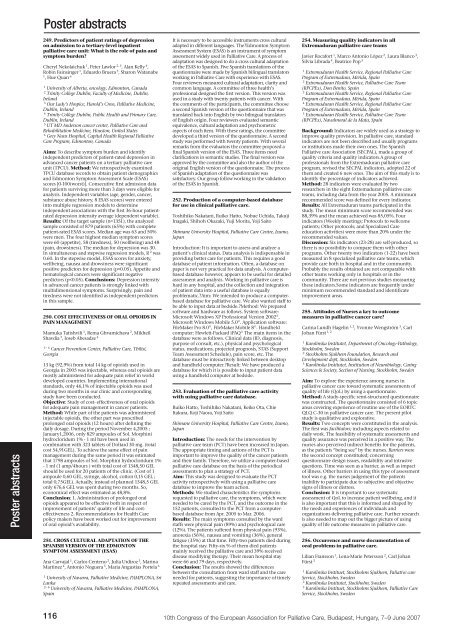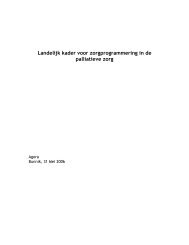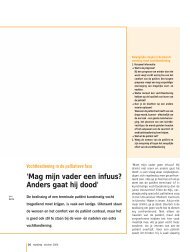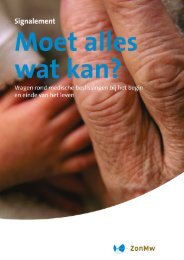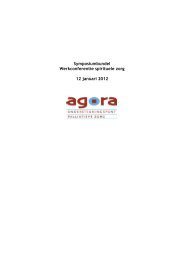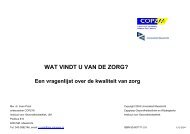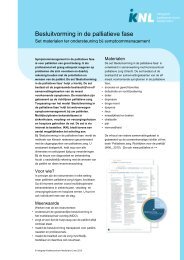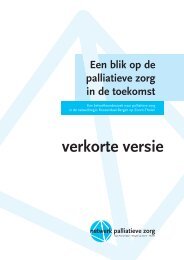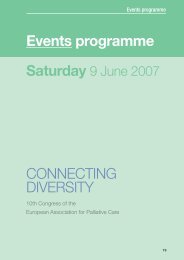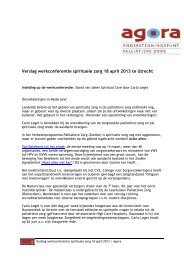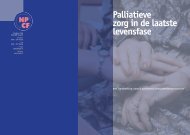Poster abstracts CONNECTING DIVERSITY
Poster abstracts CONNECTING DIVERSITY
Poster abstracts CONNECTING DIVERSITY
You also want an ePaper? Increase the reach of your titles
YUMPU automatically turns print PDFs into web optimized ePapers that Google loves.
<strong>Poster</strong> <strong>abstracts</strong><br />
<strong>Poster</strong> <strong>abstracts</strong><br />
249. Predictors of patient ratings of depression<br />
on admission to a tertiary-level inpatient<br />
palliative care unit: What is the role of pain and<br />
symptom burden?<br />
Cheryl Nekolaichuk 1 , Peter Lawlor 2, 3 , Alan Kelly 4 ,<br />
Robin Fainsinger 1 , Eduardo Bruera 5 , Sharon Watanabe<br />
1<br />
, Hue Quan 6<br />
1<br />
University of Alberta, oncology, Edmonton, Canada<br />
2<br />
Trinity College Dublin, Faculty of Medicine, Dublin,<br />
Ireland<br />
3<br />
Our Lady’s Hospice, Harold’s Cross, Palliative Medicine,<br />
Dublin, Ireland<br />
4<br />
Trinity College Dublin, Public Health and Primary Care,<br />
Dublin, Ireland<br />
5<br />
UT MD Anderson cancer center, Palliative Care and<br />
Rehabilitation Medicine, Houston, United States<br />
6<br />
Grey Nuns Hospital, Capital Health Regional Palliative<br />
Care Program, Edmonton, Canada<br />
Aims: To describe symptom burden and identify<br />
independent predictors of patient-rated depression in<br />
advanced cancer patients on a tertiary palliative care<br />
unit (TPCU). Method: We retrospectively examined<br />
TPCU database records to obtain patient demographics<br />
and Edmonton Symptom Assessment Scale (ESAS)<br />
scores [0-100(worst)]. Consecutive first admission data<br />
for patients surviving more than 3 days were eligible for<br />
analysis. Independent variables (age, gender, cancer,<br />
substance abuse history, 8 ESAS scores) were entered<br />
into multiple regression models to determine<br />
independent associations with the first 36-hour patientrated<br />
depression intensity average (dependent variable).<br />
Results: Of the target sample (n=1351), the analyzed<br />
sample consisted of 879 patients (65%) with complete<br />
patient-rated ESAS scores. Median age was 63 and 50%<br />
were men. The four highest median symptom scores<br />
were 60 (appetite), 58 (tiredness), 50 (wellbeing) and 48<br />
(pain, drowsiness). The median for depression was 30.<br />
In simultaneous and stepwise regression models, R 2 was<br />
0.60. In the stepwise model, ESAS scores for anxiety,<br />
wellbeing, nausea and drowsiness were significant<br />
positive predictors for depression (p


